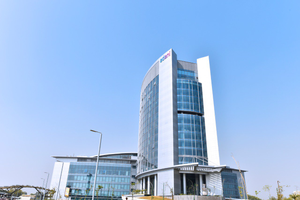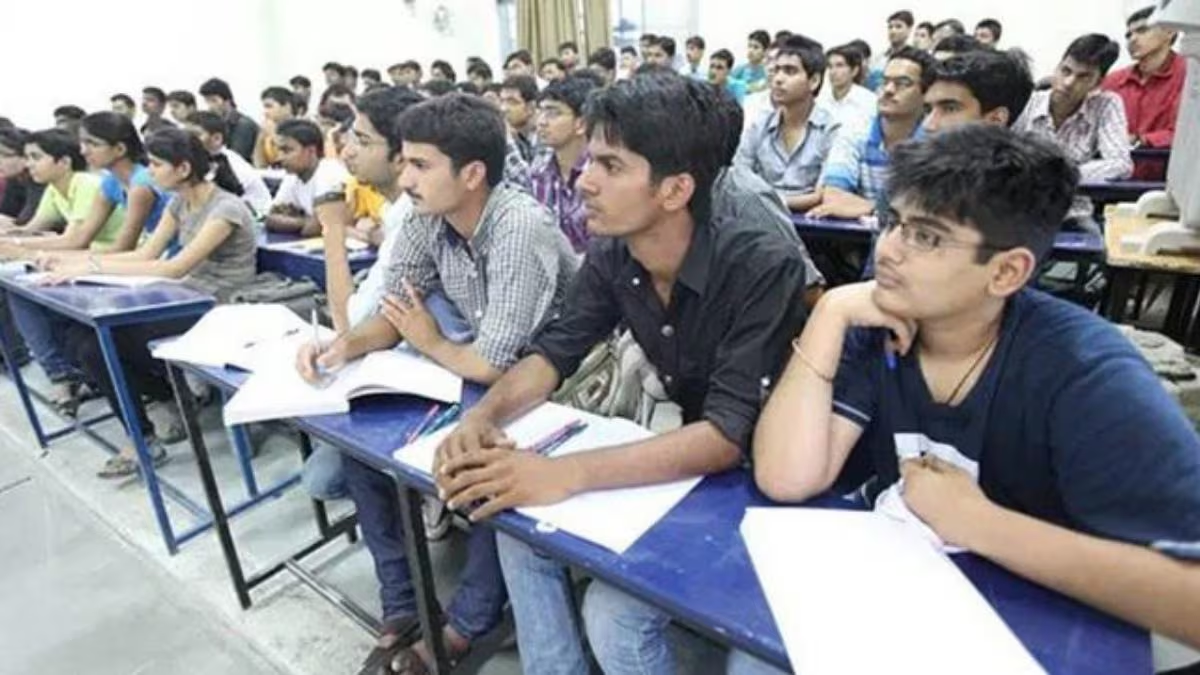Rajasthan News Desk !!! Today we will learn about the life-giving Indira Gandhi Canal of Rajasthan, which is the longest man-made canal in the world, the life-giving canal of Rajasthan that turned the barren desert into greenery, the Indira Gandhi Canal that transformed an area of Rajasthan where there was only barren land and sand for miles into lush green fields.
When was the Indira Gandhi Canal built, how was it built in such a remote desert and deadly heat, who built it, the story of its 949 kilometer long journey, the story of the transformation of Rajasthan, the story of the cities settled around this canal. So let’s know the story of Rajasthan’s life-giving Indira Gandhi Canal. The Thar located in Rajasthan is the 17th largest desert in the world and the 9th largest hot desert in the world. When India and Pakistan were divided, the desert was also divided between the two countries, in which Pakistan got 15% of this desert, while India got 85 percent of it. The vast Thar desert where nothing is visible except sandy dunes for miles, this was the part of Rajasthan where almost all of it remained barren and dry. Here people had to walk several miles to get drinking water. Searching for water here in Rajasthan was like fighting a war.
In the year 1899, a terrible famine struck North India, Rajasthan was badly affected by this terrible famine. Due to which Jaipur, Jodhpur, Nagaur, Churu and Bikaner areas of Rajasthan were hit by severe drought. Since this famine occurred in Vikram Samvat 1956, it is also called ‘Chhappaniya famine’ in the local language. This famine was recorded in the British gazetteer as ‘The Great Indian Famine 1899’. Learning from the devastation of the famine, kings, Maharajas and administrators started planning ways to deal with such famines in the future. Maharaja Ganga Singh of Bikaner was at the forefront in planning to deal with the famine and he started thinking about the plan to bring water to Rajasthan through a canal. And this responsibility was given to Kanwar Sen. The Maharaja wanted to talk to Punjab and draw a canal from the Sutlej river to reach Bikaner in Rajasthan, so that the people of Bikaner get relief from the water problem. This canal came to be known as Ganga Canal and due to this canal, Rajasthan got its food bowl city, Ganganagar.
Ganga Canal had provided relief from the water problem in Bikaner but Maharaja Ganga Singh and Kanwar Sen wanted to rid the entire Rajasthan of the water problem. To realize this dream, Maharaja Ganga Singh prepared a draft of a canal to bring water from Punjab to Rajasthan and presented it to the British government of that time. But in the year 1947, Maharaja Ganga Singh died due to cancer, after which his son Sadul Singh became the new king of Bikaner. But in the year 1947, with the independence of the country, the monarchy also ended, due to which this draft went into cold storage. After this, Kanwar Sen once again presented the plan of this canal in front of the government in the year 1948 to provide irrigation facility in an area of twenty thousand square kilometers, which was approved after long deliberations and on 31 March 1958, Union Home Minister Govind Vallabh Pant laid its foundation stone and named it Rajasthan Canal. Along with this, Punjab also agreed to give water to Rajasthan like a good neighbor. For the water of this canal, it was decided to build Harike Barrage at the confluence of Sutlej and Beas rivers near Ferozepur in Punjab. But even after approval and arrangement of water, construction of this canal was not an easy task.
In the Thar Desert, removing the soil of sandy dunes and leveling them for hundreds of kilometers in length and building a canal was a very difficult task in itself. The terrible heat and storms of the desert made it almost impossible for the engineers and laborers to work here, apart from this, many laborers and engineers had died due to the extreme heat and extreme cold in winter. At that time, neither modern machines were there nor adequate resources. But Kanwar Singh had also kept the environment in mind while preparing the draft of the canal, that is why to deal with it, Kanwar Singh and his team used camels, called the ships of the desert, to dig the land. When the work of digging the land was started by camels, the donkey, which is called the most hardworking animal, also did the work of carrying the goods very well. Camels and donkeys together started working on a war footing and made the impossible work of digging and transporting the soil possible. If these animals were not there, it would have been impossible to build this canal. Countless animals lost their lives in building this canal but the work was not stopped.
Finally, after a long wait, sacrifice of hundreds of animals and people, the day came which was to be inscribed in golden letters for the Thar Desert, when on 1 January 1987, water from the Himalayas, cutting through the vast desert, travelled a distance of 649 kilometres and reached Mohangarh in Jaisalmer. This canal, which gives life to Rajasthan, is actually like a river due to its size and length. This canal starts from Harike Barrage, built at the confluence of Sutlej and Beas rivers near Firozpur in Punjab. This canal, the longest in the country, is 649 kilometres long. Here one important thing has to be understood that due to various types of natural adversities, it was not possible to build this canal in one go. Therefore, it was completed in two different phases, in its first phase, a 204 kilometre long feeder canal was built from Punjab to Rajasthan, while in the second phase, a 445 kilometre long main canal was built. Of the 204 kilometer length of feeder canal constructed in its first phase, 170 kilometer part falls in Punjab and Haryana and 34 kilometer part falls in Rajasthan. Apart from the main feeder, a 189 kilometer long main canal was also constructed in Rajasthan. The depth of this canal on the border of Rajasthan is 21 feet and the width of the bottom is 134 feet and the surface is 218 feet wide.
But in its first and second phase, the water of this canal could reach only till Hanumangarh, now a big challenge was waiting for its builders to take it to Jaisalmer. The challenge was that this 145 km long canal from Hanumangarh to Jaisalmer had to be built not on flat areas but on a slope. After this, the canal engineers met this challenge by building an engineering lift canal in desert districts beyond everyone’s imagination. After the completion of the construction of this canal, it populated those areas of Rajasthan where it rained only 4 to 5 times a year. Today, nine branches emerge from the main canal extending from Masitawali of Hanumangarh to Mohangarh of Jaisalmer. Its distributaries for irrigation are 9,245 km long, which fulfills the water shortage in the lives of the people of ten desert districts of Rajasthan. Apart from this, this canal also provides water for many power projects.
It is as if Rajasthan has got a new lease of life with the construction of this canal. The scorching and barren sand of the desert has turned into green fields, plains and cities today. Due to this, rainfall in Rajasthan increased by 40 to 50 percent and on the other hand migration also reduced by 48 to 60 percent. Not only this, this area became so fertile that people from Punjab and Haryana also came here due to farming and other jobs. This canal has changed the fate and life of districts like Ganganagar, Hanumangarh, Bikaner, Jaisalmer, Barmer, Jodhpur, Nagaur, Churu, Jhunjhunu, Sikar, Jaisalmer and Barmer in Rajasthan. The vast desert of Thar, where once nothing was visible except sandy dunes for miles, is now covered with greenery. Deserted areas have been inhabited and bumper agricultural produce is being produced. The desert has now completely changed due to this canal which has become the lifeline of Rajasthan. The population of ten big cities including Jodhpur-Bikaner is completely dependent on the water of this canal for their water needs. Besides, this canal, running parallel to the India-Pakistan border, also works as a security line.
Today, the desert districts of Rajasthan cannot be imagined without this canal. This canal brought water to an area where earlier it hardly rained ten inches a year. Now greenery is blooming everywhere in the desert. After the arrival of the canal, the desert area changed completely. The population of the canal area increased rapidly, due to which many villages and towns developed. Many agriculture based industries were established due to the opening of new markets. Doors of employment opened for the people of the desert area who were dependent only on animal husbandry. Due to all this, the landscape of this area has completely changed.
The canal area here started producing 37 lakh tonnes of agricultural produce annually. After the death of the then Prime Minister Indira Gandhi, on 2 November 1984, the state government changed its name from Rajasthan Canal to Indira Gandhi Canal. So friends, this was the story of Rajasthan Canal becoming Indira Gandhi Canal, thank you for watching the video, if you liked this video, please give your opinion by commenting, subscribe to the channel, like the video, and share it with your friends and family.


